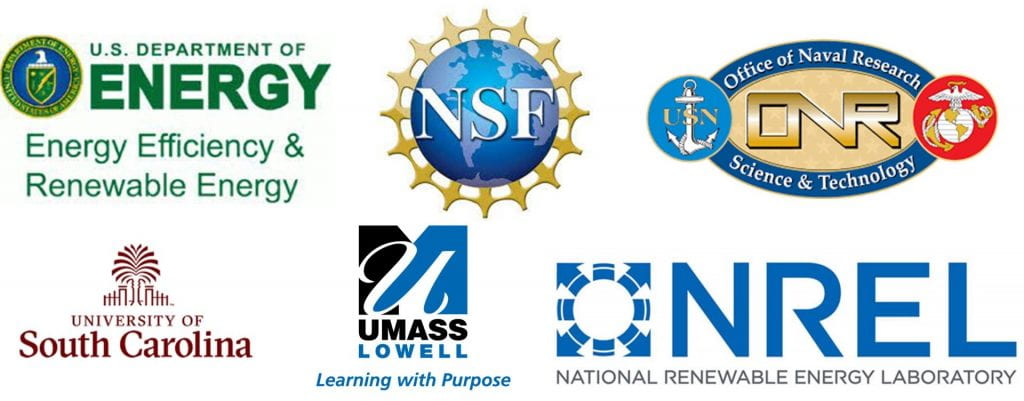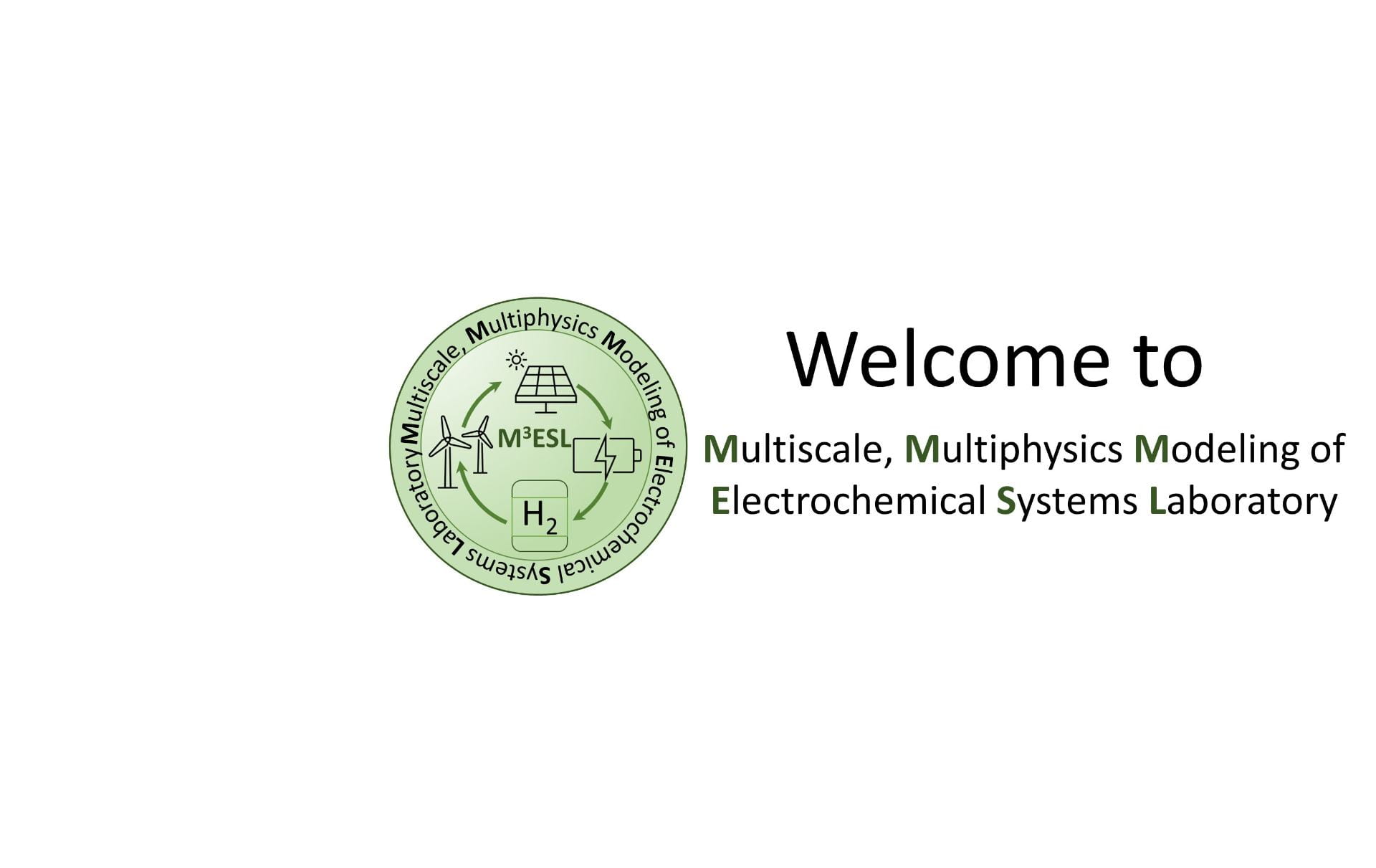
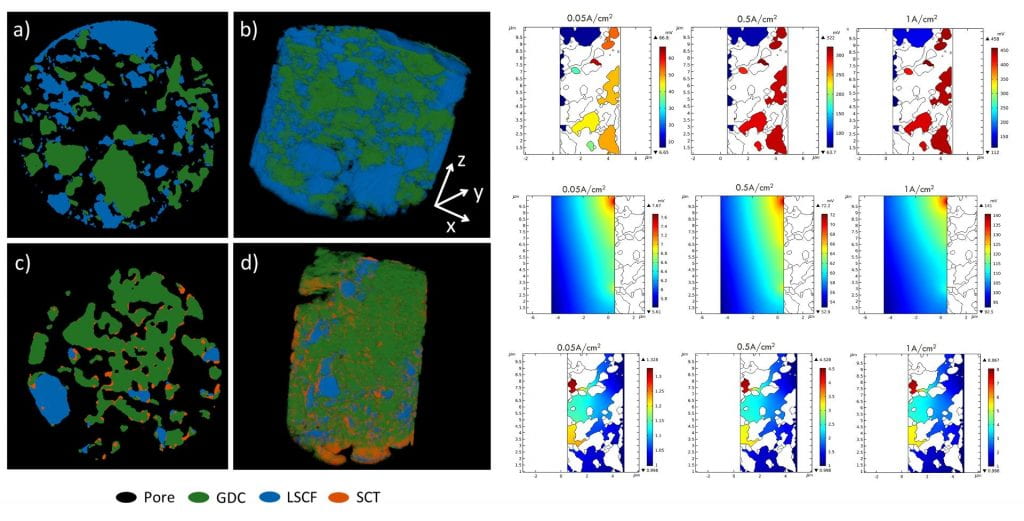
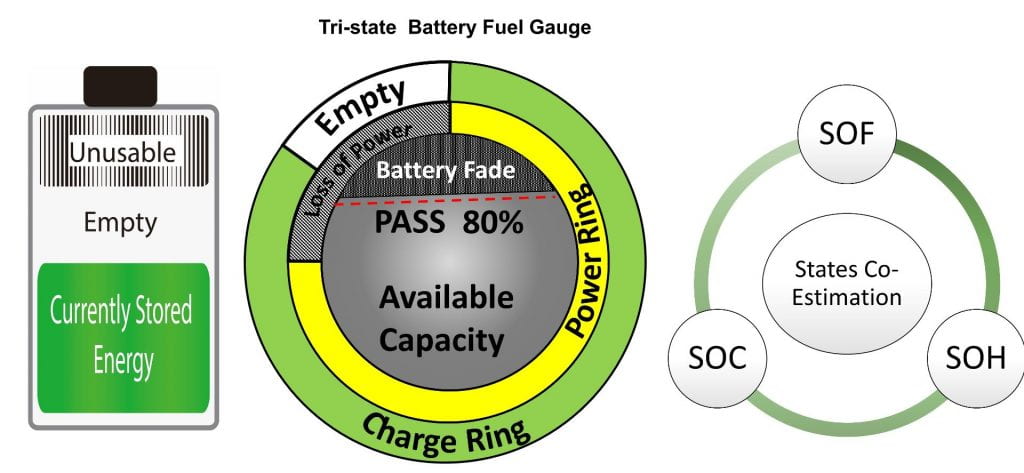
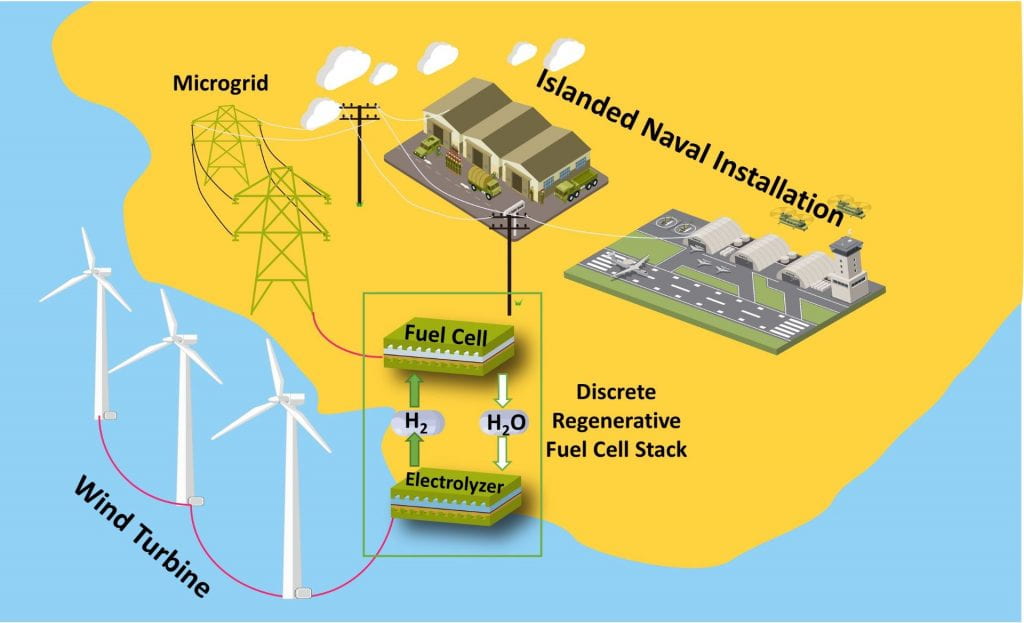
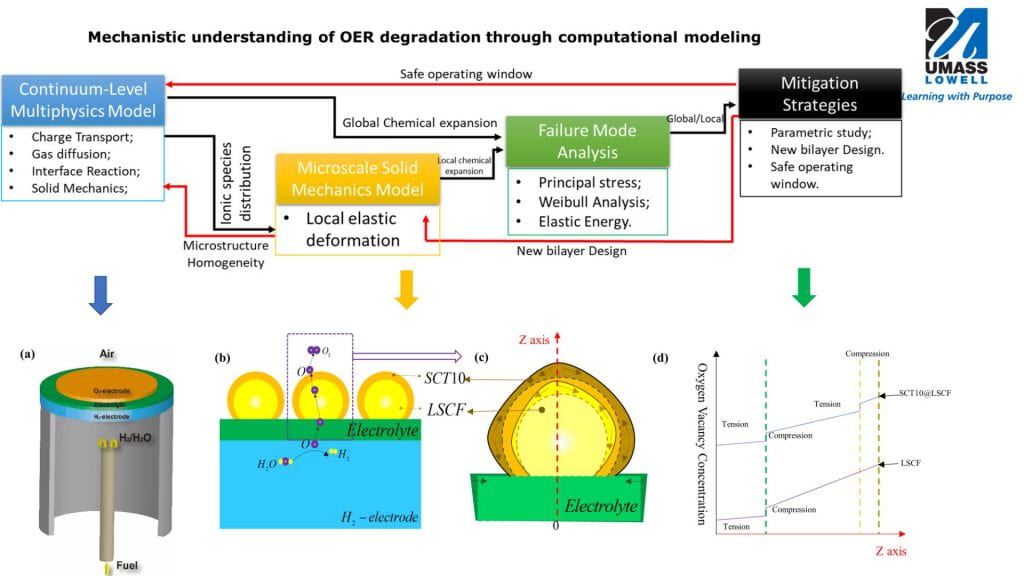
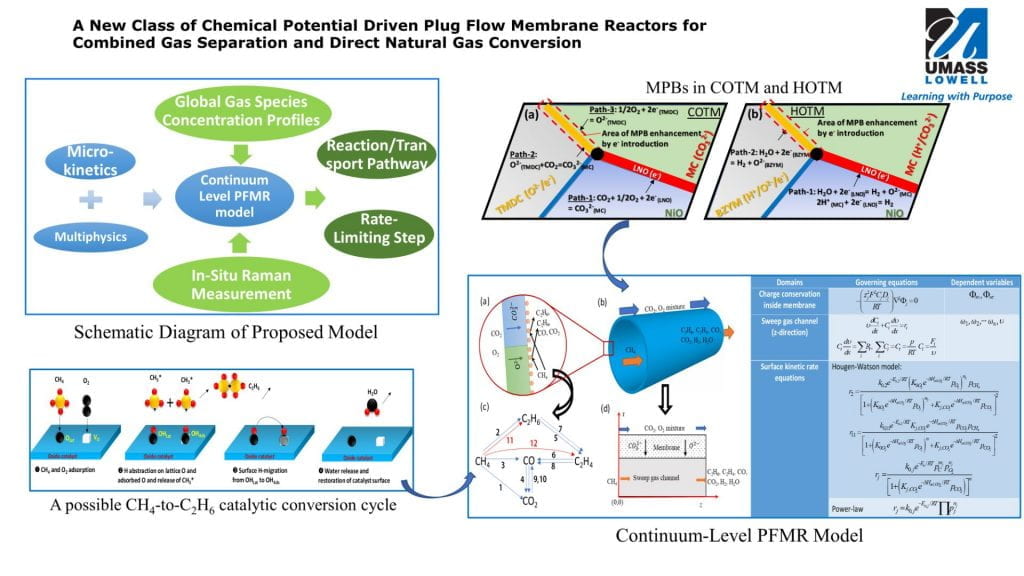
Thermal Fluids, Transport Phenomenon, and Energy Storage
Collaborative Research: A New Class of Chemical Potential Driven Plug Flow Membrane Reactors for Combined Gas Separation and Direct Natural Gas Conversion To fundamentally solve global warming and climate change issues, abating and ultimately stopping the release of CO2 into the atmosphere is imperative. Another recent notable development in the energy field is the significantly increased production of natural gas (NG) from shale and tight oil. The central objective of the research is to advance the science and engineering of the new chemical-potential driven (electricity-free) membrane plug flow reactors for combined gas separation and direct conversion of NG and NGLs (NG liquids, C2-C5) into valuable chemical products. To guide the engineering design of Potential Driven Plug Flow Membrane Reactors, we will develop a high-fidelity multiphysics model to simulate reactor’s behavior under practical operating conditions and predict PFMRs’ optimal performance. The model will couple transmembrane electrochemical CO2/O2 co-transport with surface catalytic chemical reactions. Opportunities exist in this project to collaborate with researchers at other universities.
A Multifunctional Isostructural Bilayer Oxygen Evolution Electrode for Durable Intermediate-Temperature Electrochemical Water Splitting One of the major challenges for high-temperature solid-oxide-cell based H2-production is the marked performance degradation caused by the mechanical separation between the oxygen electrode and electrolyte. The higher the current, the severer the separation. The leading cause for the delamination is the slower rate of oxygen release from the electrode than that of electricity-driven oxygen flux coming from the electrolyte, resulting in a gradual buildup of gaseous oxygen molecules at the interface, which would eventually detach the electrode layer from the electrolyte when the buildup pressure exceeds the bonding strength. To fundamentally solve the delamination problem, the mismatch between the rates of oxygen release and production must be adequately balanced. Since the rate of oxygen production is controlled by the ionic current or load, maximizing the rate of oxygen release from the electrode to match up with the ionic current is key to minimize oxygen buildup at the interface. The research is aimed at addressing this rate-mismatch problem by developing a new isostructural bilayer OER electrode with a high and sustainable rate of oxygen release to match high operating current densities.
High-Energy Density Flow Batteries for Naval Installations on Shore and Shipboard Applications Redox flow batteries are considered to be one of the key technologies to enable the transition toward a carbon-neutral electricity grid. Despite their promise, the energy density of these systems is intrinsically limited by the solubility of the redox active species in the electrolyte, limiting the achievable energy density to < 40 Wh×L-1 (~ one order of magnitude lower than lithium ion batteries). The research seeks to address this limitation by storing the charge in an energy-dense redox-active solid phase, rather than soluble active species using model and experiment coupling approach. The main concept that will be evaluated is called as a redox-mediated flow battery, where a redox mediator (M) shuttles charge between the flow cell and the solid charge storage materials (S) in the tanks.
Feasibility and Resilience Study of Renewable Energy/Regenerative Fuel Cell Hybrid Power System for Islanded Naval Installations The US Navy’s operational missions on remote islands rely on Islanded Naval Installations (INIs) to provide reliable power. The energy price from most INIs’ diesel-based power systems ranges from $0.21 to $0.54/kWh; however, with escalating fossil fuel costs, logistical challenges in shipping fuels, increasing renewable power installation, and the power shortage caused by weather or cyberattacks, the cost and resilience of the existing power generation systems have been facing significant challenges. Energy storage devices can provide services to help tackle the renewable integration challenges by aligning the balance between supply and demand, supplementing transmission, and providing operating reserves. Short-term storage devices with fast response rates and high power-to-energy ratios could be met by Lithium-ion batteries (LIBs). Beyond diurnal storage, research has found that very high penetrations of renewables could be facilitated by multi-day or even seasonal storage of hydrogen. This project will demonstrate a benchtop 50W renewable energy/regenerative fuel cell integrated system and perform a scalability study to scale the system up to 850kW for reduced cost and improved resilience.
Airborne Wind Turbine for Resilient Remote Power and Fuel Generation Intermittency at remote naval bases can occur unexpectedly, disrupting operations and services, with potentially catastrophic impacts on hospitals, data centers and mission critical systems dependent on continuous power. An airborne wind turbine solution has the ability to provide emergency electrical power or be used for fuel generation as needed while having a minimal foot print, being low-cost and portable, and accessing a more robust and stable wind resource at higher elevations than ground based wind turbines. Successful design and implementation will lead to reduced reliance on transported fuel and increased energy resiliency. Electrical energy will be generated in a renewable manner at a relatively low rate below the naval base’s operating needs during times when electricity is abundant. The excess electricity will be stored over long duration and then during times of variability or interruption, the electrical power will be recovered from the stored hydrogen. Such an energy generation system will enhance resiliency and will limit the scope and timescale of adverse energy events and/or will accelerate full recovery. Within the project, the team will analyze and optimize the design considering several variations in approach. An operating envelope for the turbine will be determined as well as a power curve. The project will involve system analysis, a feasibility study, a design, build and test of a scale-prototype. Lessons learned will be provided and feasibility will be demonstrated. Several turbines operated in parallel should easily be able to develop 10kW to 100 kW systems that can be used for electricity generation or remote fuel production (e.g. hydrogen).
Electrochemical Thermal Coupled Model and Model Development The electrochemical thermal coupled model is a powerful technique to improve the battery management system algorithms’ accuracy and battery’s charging safety. The research developed a high accuracy electrochemical thermal coupled model based on specified battery; developed fast charge strategy without lithium plating; developed an online diagnostic method for lithium plating and validation.
Energy Cloud Solution Analysis by Syncell While renewable energy takes center stage in the goal for clean, distributed energy solutions, businesses and consumers need a more flexible, scalable, resilient, and achievable strategy to maximize the on-premise and behind-the-meter benefits that can align with their needs. A sustainable strategy that lowers the cost whether the power is used for stationary applications for offices or homes, in a vehicle, or power equipment. This report reviews the costs and application potential of a platform offered by SynCells that uses concepts and techniques from the Information Technology industry to provide more flexibility and greater levels of control as a possible cost-effective alternative to the dedicated resources applied in buildings and vehicles today. Applications beyond energy will also be identified, with opportunities for smart buildings, data centers, edge computing, 5G, and more considered as part of a converged strategy.
